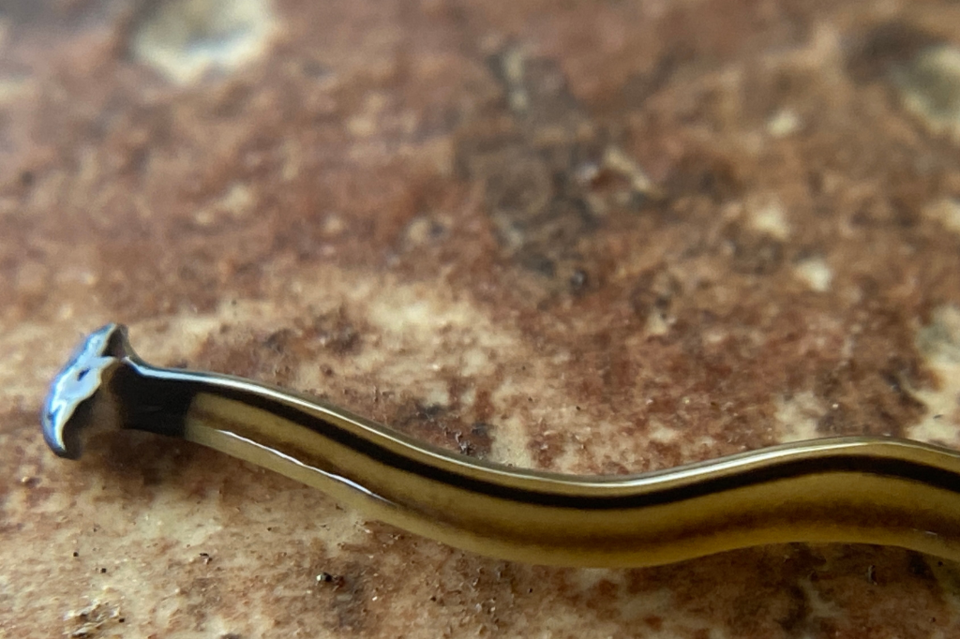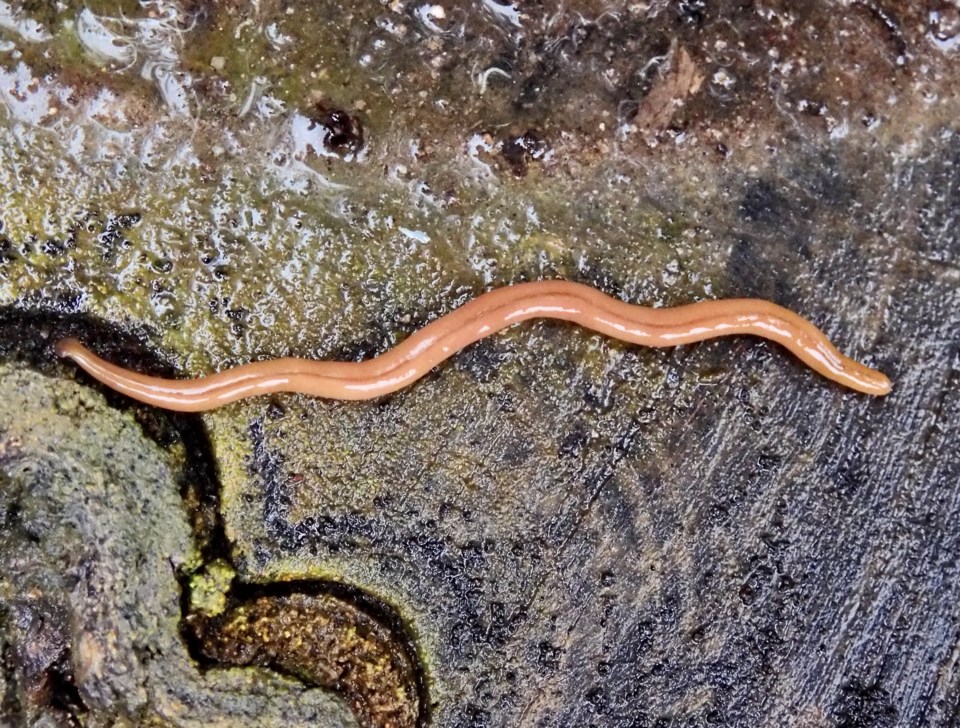Be careful when you dig in your garden this spring as an unwanted intruder has made its way to Newmarket: the invasive and toxic hammerhead worm.
These wrigglers, native to Southeast Asia tropical and semi-tropical areas, have found their way to Newmarket, Hamilton and the Kitchener region, hitching a ride on nursery stock materials like burlap, or as small cocoons in soil.
“They have been here for a long time, but they are more numerous as the climate changes and warms up,” said John Reynolds, director of the Oligochaetology Laboratory.
"They have to be vectored. They don’t move far by themselves, that is why it is best if you can, buy planting material that is bare roots so there is no soil or anything with it. The cocoons are small. If they are in the soil, you wouldn’t necessarily see it.”
Reynolds advises gardeners not to pick them up with their bare hands but to always wear gloves or use a shovel.
The hammerhead worm, which is named for the flat shape of its head, has sparked concerns about its potential impact on local ecosystems and wildlife.
“I am concerned about their potential impact on ecosystems,” said Cathy Kavassalis, master gardener with the Ontario Master Gardener Program, and member of the Canadian Coalition for Invasive Plant Regulation. “While some of these land planarians feed mostly on earthworms, which are themselves invasive, others are generalist and may prey on species at risk. At this time, we do not know the extent of the risks they pose.”
Measuring up to three feet long, these hammerhead worms, also known as broadhead planarians, pose a threat to small animals and pets due to their toxic nature.
“One to three feet is quite normal for this particular one,” said Reynolds. “That is much larger than any earthworm you will find here in this country.”
Reynolds expects people to notice them more frequently as hammerheads can regenerate from sections of their body and even multiply.
“You’re not going to get rid of them easily,’ said Reynolds. “If you cut them in pieces, each piece will produce a new individual. That is one way they can reproduce. They can also lay cocoons if they meet with another worm and trade sperm, or they can produce eggs that can generate a new individual without being fertilized. It is easy for them to propagate.”
Their flat-shaped heads and distinct appearance make them easily identifiable, but their real danger lies in the neurotoxin they carry – tetrodotoxin, the same toxin found in deadly pufferfish.

Tetrodotoxin can be lethal to small creatures, but humans may only experience a slight rash upon contact and discomfort. It won’t be fatal.
“While some hammerhead worms can produce the same neurotoxin, tetrodotoxin, found in some pufferfish, the quantity is very small, and this poses a low risk to humans or pets,” said Kavassalis. “Even with pufferfish, tetrodotoxin poisoning is extremely rare. However, flatworms excrete irritating secretions to digest their prey, and these chemicals could potentially irritate the skin. They should be handled with care. Wear gloves or use an implement to collect and dispose of worms. Wash skin if you do contact them.”
Kavassalis said invasive species are spread around the world at an alarming rate. Reports of hammerhead worm sightings have been pouring in, with concerned citizens using platforms like iNaturalist.ca to document their encounters. The most recent reports date back to the end of March, but records show sightings dating as far back as 2017, indicating a persistent presence of these invasive worms in the province.
If you encounter these worms in your garden, you can place them in a container or plastic bag so they cannot escape and kill it by placing the container in the direct sun for several hours with table salt or hand sanitizer.
Once the worm is dead, wash your hands thoroughly and avoid getting any mucus in your mouth or eyes. Then, dispose of the container or bag in the trash.
“If you find them and want to eliminate them, I say the easiest thing is to put them in a plastic bag, seal them, and leave them out in the sun for a while,” said Reynolds. "When they die, and they’re dead, put them in the garbage because they’ll go to the landfill, and they won’t bother anything in the landfill.”
You can report sightings to the Invasive Species Centre through their online reporting tool or use a community science app like iNaturalist for reporting purposes.
— With files from Mathew Lajoie
